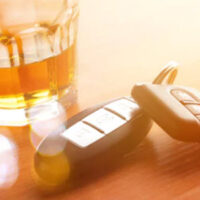How To Prevent Drunk Driving In Florida

April is Alcohol Awareness Month and unfortunately, drunk driving is still a big problem in the United States. In fact, about one in three traffic deaths in the United States involve a drunk driver. In all 50 states and the District of Colombia, drivers with a blood alcohol concentration (BAC) of 0.08% or higher (i.e., drunk drivers) are considered alcohol-impaired by law. However in recent years, the number of DUI charges in Florida has decreased as the state continues to crack down on the offense. The average DUI cost in the US is $10,000 – an amount high enough that parting with it could seriously change people’s lives. And under Florida law, a DUI charge can be enhanced if a personal injury occurred. DUI Causing Serious Bodily Injury is a third-degree felony and punishable by up to 5 years in person, even if you have no record. Additionally, the victim or victims of a car accident involving a DUI arrest may sue you for personal injury damages in civil court.
The Guide to Community Preventive Services offers strategies that have been demonstrated to be effective in reviews by the National Highway Traffic Safety Administration. The following strategies to reduce or prevent drunk driving include:
- Drunk driving laws make it illegal nationwide to drive with a BAC at or above 0.08%. For people under 21, “zero tolerance” laws make it illegal to drive with any measurable amount of alcohol in their system. These laws, along with laws that maintain the minimum legal drinking age at 21, are in place in all 50 states and the District of Columbia, and have had a clear effect on highway safety, saving tens of thousands of lives since their implementation.
- Sobriety checkpoints are legal in Florida and allow police to briefly stop vehicles at specific, highly visible locations to see if the driver is impaired. Police may stop all or a certain portion of drivers. Breath tests may be given if police have a reason to suspect the driver is intoxicated.
- Ignition interlocks installed in cars measure alcohol on the driver’s breath. Interlocks keep the car from starting if the driver has a BAC above a certain level, usually 0.02%. They’re used for people convicted of drunk driving and are highly effective at preventing repeat offenses while installed. Mandating interlocks for all offenders, including first-time offenders, will have the greatest impact.
- Multi-component interventions combine several programs or policies to prevent drunk driving. The key to these comprehensive efforts is community mobilization by involving coalitions or task forces in design and implementation.
- Mass media campaigns spread messages about the physical dangers and legal consequences of drunk driving. They persuade people not to drink and drive and encourage them to keep other drivers from doing so. Campaigns are most effective when supporting other impaired driving prevention strategies.
- Administrative license revocation or suspension laws allow police to take away the license of a driver who tests at or above the legal BAC limit or who refuses testing. States decide how long to suspend the license; a minimum of 90 days is effective.
- Alcohol screening and brief interventions take advantage of “teachable moments” to identify people at risk for alcohol problems and get them treatment as needed. This combined strategy, which can be delivered in health care, university, and other settings, helps change behavior and reduces alcohol-impaired crashes and injuries.
- School-based instructional programs are effective at teaching teens not to ride with drunk drivers. More evidence is needed to see if these programs can also reduce drunk driving and related crashes.”
